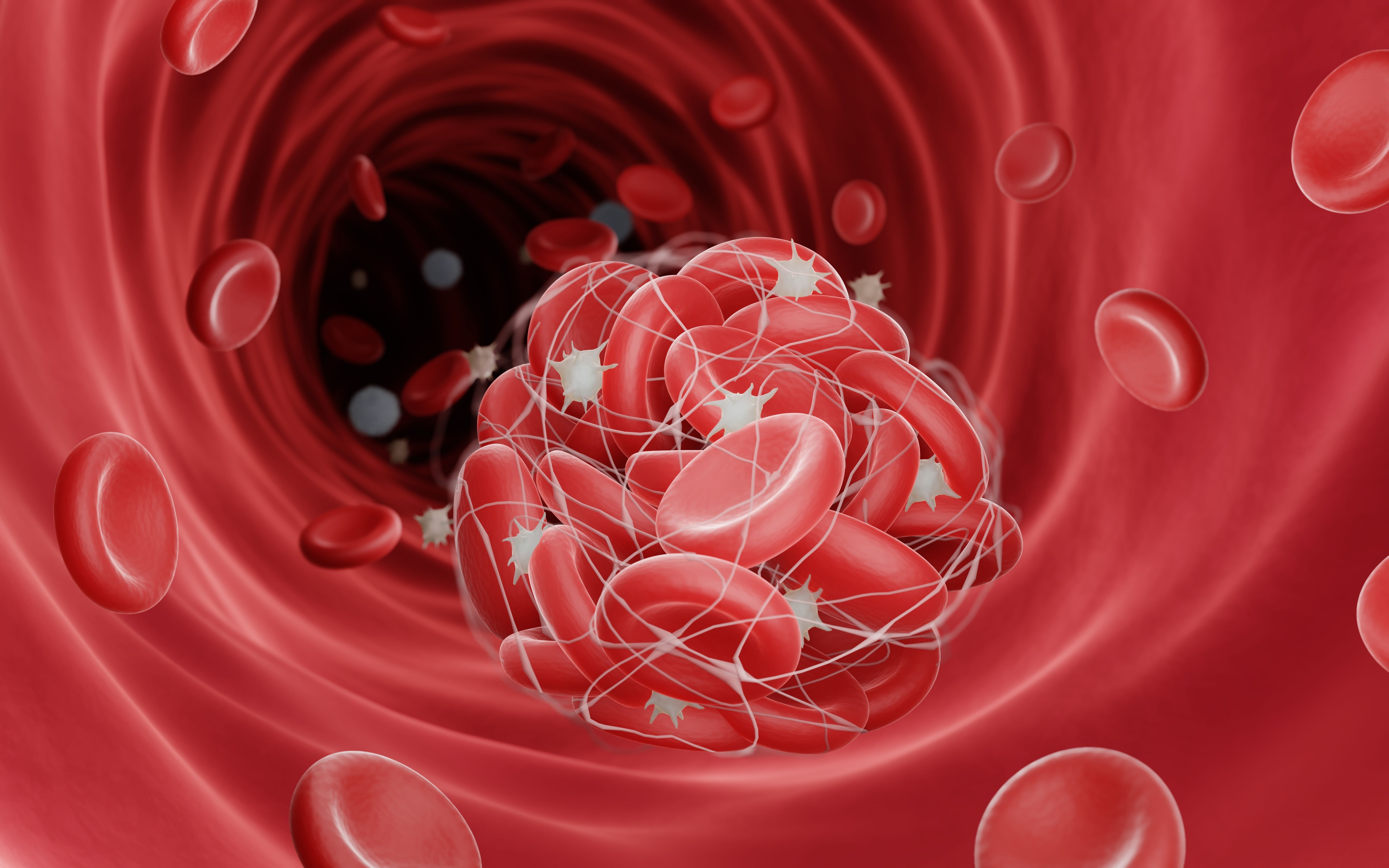- Center on Health Equity & Access
- Clinical
- Health Care Cost
- Health Care Delivery
- Insurance
- Policy
- Technology
- Value-Based Care
Patients With ADAMTS13 Deficiency and/or TTP Experience High Clinical Burden
A retrospective database analysis demonstrated the high clinical burden experienced by patients with severe deficiencies of ADAMTS13 and thrombotic thrombocytopenic purpura (TTP)–related diagnoses.
Patients who have severely deficient levels of ADAMTS13 experience great clinical and financial burden, as well as higher rates of readmission and mortality, according to a recent analysis published in American Journal of Health-System Pharmacy.1
Clotting complications are a severe symptom of TTP | image credit: Artur - stock.adobe.com

ADAMTS13 is a plasma protein that, along with one’s platelets, plays an important role in the blood clotting process.2 When concentrations of ADAMTS13 are lower, this shortage can lead to the aggregation of platelets and the subsequent development of thrombotic thrombocytopenic purpura (TTP). An ADAMTS13 deficiency can be characterized as either acquired TTP, which typically impacts women who are or were recently pregnant (approximately 1 in every 25,000 pregnancies), or congenital TTP that occurs due to an ADAMTS13 gene mutation.
In recent years, measures of ADAMTS13 antibodies, activity, or inhibitors have become the standard for detecting and diagnosing TTP, distinguishing which TTP an individual has, as well as predicting their chances of relapse. The availability of an ADAMTS13 assay for these purposes has been a great tool for improving outcomes in TTP because, when left untreated, TTP has a mortality rate of approximately 90%.
A severe level of ADAMTS13, characterized by the present authors as activity that falls below 10%, is the threshold for a TTP diagnosis.1 As TTP is linked with multiple clinical symptoms ranging from nausea and confusion to stroke and seizures, lab results abnormalities, and long-term complications, the authors conducted a study to overview the disease characteristics, prognosis, outcomes, treatments, and costs associated with ADAMTS13 deficiency—which remains largely misunderstood.
Data were retrospectively gathered from the Premier Health Database, a US hospital–based, payer-agnostic, service- and patient-level database that houses information related to laboratory results, billing, and finances. Patients were included who had a recorded ADAMTS13 activity level below 10%.
In total, the authors’ cohort consisted of 221 patients with severe ADAMTS13 deficiency. Among this group, a large percentage was aged between 41 and 50 years (21%), there were more female patients than male patients (69% vs 31%), 39% were Black and 43% were White, and 43% of individuals used commercial insurance as their form of payment.
There were 188 (89%) patients with a TTP-related diagnosis, which was the primary diagnosis for 143 (68%). In 131 cases (62%), thrombotic microangiopathy was noted as the main reason for their admission to the hospital, making it the most prevalent report from this analysis.
Laboratory results revealed that the median activity level for ADAMTS13 was 4%, 91 patients had elevated reticulocyte counts, and 171 had below-average platelet concentrations. A normal estimated glomerular filtration rate came back for 18 patients, and troponin I and lactate dehydrogenase were found to be elevated in 51 and 164 patients, respectively. There were 88 patients who had undetectable levels of haptoglobin, 108 with the presence of schistocytes, and 156 with below-average hematocrit levels.
Complications or symptoms were experienced by 172 patients (82%), with neurological symptoms occurring for 103 (43%), bleeding for 80 (38%), pain for 37 (18%), and respiratory or cardiovascular issues for 27 (13%). Stroke, headache, and anxiety were the most prevalent neurological symptoms. Additionally, 28 patients (13%) experienced depression. The most prevalent comorbidities were rheumatoid arthritis or collagen vascular disease (74%; n = 157), followed by uncomplicated hypertension (39%; n = 82), electrolyte and fluid disorders (38%; n = 81), coagulopathy (34%; n = 72), and other neurological disorders (27%; n = 56).
Women with childbearing potential (aged 15-49 years; n = 84) with severe ADAMTS13 deficiency reported pregnancy-related complications such as prenatal hypertension, preeclampsia, miscarriage, or intrauterine growth restriction (7%), as well as excessive menstruation (5%).
As for TTP-related treatments, 170 patients (81%) were administered at least 1. These treatments included plasma exchange (55%), plasma reception only (15%), steroids (68%), rituximab (28%), or caplacizumab (1%). Patients spent an average of 11.5 days in the hospital and the median hospital cost—across all forms of admission—was $33,221.
“Maintaining normal ADAMTS13 activity is imperative for preventing acute episodes and future organ damage, which may potentially decrease the clinical and economic burden of TTP.... Patients with severe ADAMTS13 deficiency can represent a high cost to hospitals. Heterogeneous symptoms mean that recognition and management of this condition can be complicated. Currently, there is an unmet need for ADAMTS13 replacement therapy to treat the cause of the symptoms and complications associated with the severe deficiency and that may be used for prophylaxis,” the authors concluded.
References
1. Xing S, Bullano M, Hale S, Lokhandwala T, Murty S. Clinical and economic burden of suspected thrombotic thrombocytopenic purpura in US hospitals. Am J Health Syst Pharm. 2024:zxae167. doi:10.1093/ajhp/zxae167
2. Thrombotic thrombocytopenic purpura: the role of ADAMTS13. Cleveland Clinic. Published online July 11, 2017. Accessed July 15, 2024. https://consultqd.clevelandclinic.org/thrombotic-thrombocytopenic-purpura-the-role-of-adamts13
